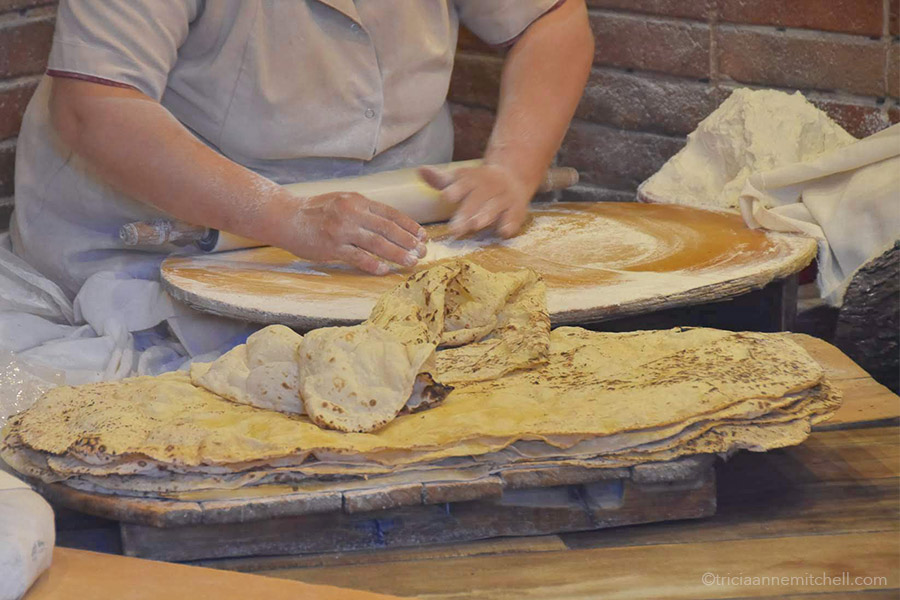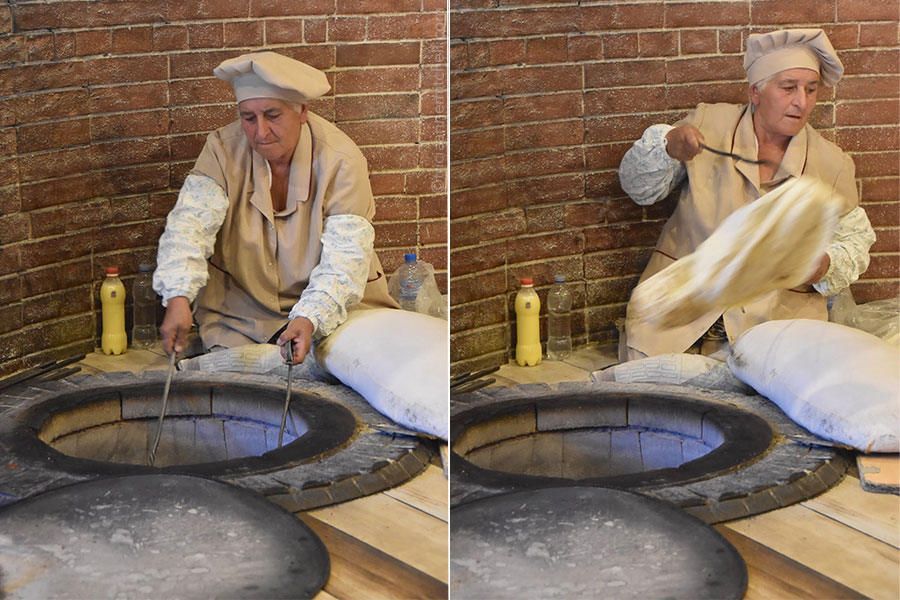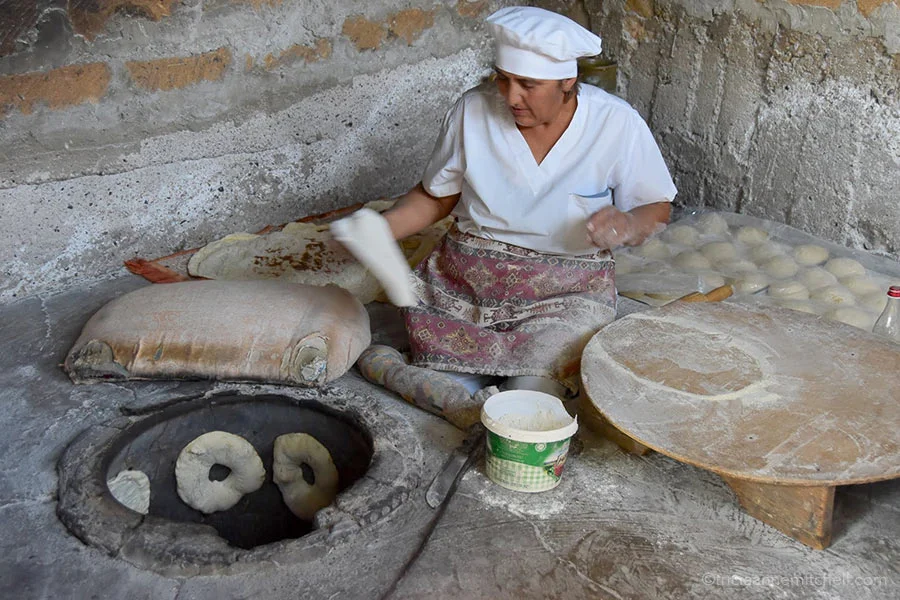We took the night train from Tbilisi to Yerevan. Arriving in Armenia 11 hours later, we were feeling disoriented, groggy, and ravenous.
When Shawn and I chanced upon some ladies baking lavash flatbread inside a restaurant next to our apartment, we immediately perked up. Sensing our curiosity about the baking process, an employee motioned for us to wait at the counter.
She also handed us a plate filled with a bunch of grapes. This was a fitting act of kindness given that wine has been made in Armenia for thousands of years.
Lavash dough is made out of simple ingredients: flour, salt, and water. Here’s a lavash recipe that doesn’t require a clay oven.
A few minutes later, the woman treated Shawn to a sheet of lavash. It was still warm when he devoured it. Instinctively, she must have known that he loses all self-control when fresh bread appears on the scene.
Watching lavash being prepared is a pleasure. However, it’s hard work for the baker.
First, the baker lowers her lower body into a hole in the ground and has a seat.
She then takes a ball of dough and rolls it into a thin sheet.
From there, she stretches the sheet of elastic dough onto a baking apparatus that looks like a firm pillow or cushion.
Next, the baker uses this cushion to slap the dough into an underground oven called a tonir.
In about 45 seconds, the lavash is slightly crispy and ready to remove from the tonir.
Using a wire hook, the baker extracts the lavash from the subterranean oven and places it onto a pile. Over time, the mass of lavash grows tall, bringing to mind the pages of a handmade book.
Unfortunately, I can’t eat lavash since it’s made with wheat flour containing gluten. Shawn, however, acts as my taste buds during our travels. After a week in Armenia, he concluded that the lavash was especially delicious when filled with white cheese, as well as herbs like cilantro, parsley, and dill.
Like the Armenians we met, Shawn also liked using a sheet of lavash to wrap up almost any component of a meal — be it vegetables or chicken.
The lavash’s brilliance, Shawn explained, is that it’s so thin that it doesn’t fill you up. This apparently allows you to enjoy the rest of the dishes on the table without feeling like you’ve turned into the Michelin Man.
In 2014, UNESCO included lavash (in Armenian, lavash is written Լավաշ) on its Intangible Cultural Heritage of Humanity list. It’s worth noting that this type of bread is popular in many countries in the region, including neighboring Azerbaijan, Turkey, and Iran.
Incredibly, archaeologists have even discovered Armenian tonirs that are more than 2,500 years old.
I’m curious: Do you make your own bread at home? Or have you become enamored with a certain type of bread during your travels? Please share your thoughts in the comments below.

























Shawn’s Video:
Where in the World?
Photography & text © Tricia A. Mitchell. All Rights Reserved. My husband, Shawn, created the video.